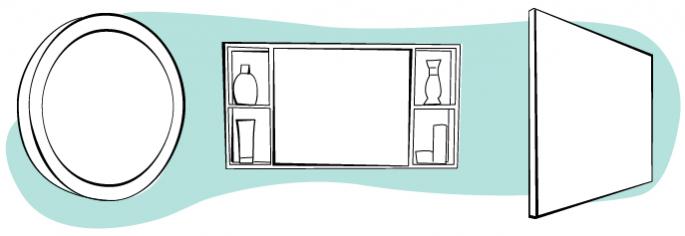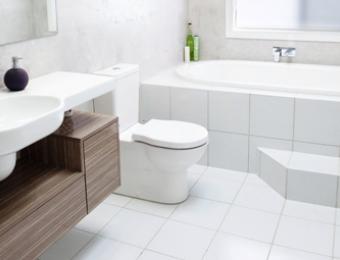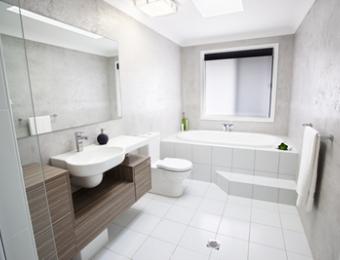Mirrors are an essential part of any bathroom, no matter what size it is or how frequently they are used. Choosing the right mirror can really make your bathroom ‘pop’. When you're choosing a mirror, you should also give some thought to where it's going to be installed, and how that will affect the feel of the bathroom. A large, well-placed mirror can easily help to create the illusion of extra space - something that's normally at a premium in bathrooms.

Wall mounting, frame and cut
The simplest bathroom mirrors are hung on the wall, like a picture. These mirrors do the job, and are relatively cheap and easy to install or replace. How much these types of mirrors stand out (or fit in, for that matter) depends largely on the frame and cut of the glass. If you are going to choose a simple hanging mirror, think about how it will look with a frame that matches your fittings and overall colour scheme of your bathroom.
Frameless mirrors can be mounted directly to the wall, usually using some sort of adhesive. The edges of these types of mirrors are normally buffed and rounded to prevent accidents. These mirrors seem to hang on nothing, which can make for some interesting effects, and can be ordered to the exact size you need.
Fogless mirrors
There are a number of methods to make mirrors fog-free. The most common include surface treatments, and methods to heat the mirror up. Non-fog surface treatments include sprays and semi-permanent water-repellant coatings that may be applied to the front surface of the mirror. In most cases these treatments will need to be re-applied over time to maintain the same effect.
Another option involves installing low-powered heating elements on the rear surface of the mirror, often wired into the bathroom's lighting. Condensation normally occurs on mirrors as a result of the temperature difference between the mirror and the surrounding air. By reducing this, these systems are able to reduce or completely eliminate the amount of condensation that appears on the mirror. In addition to the intial installation costs, however, mirror heating systems also consume electricity. If you're considering one, pay attention to how much power it will consume.
Illuminated mirrors
Some mirrors are illuminated, and have lights fitted to the edges of the mirror. These can look great, can provide an alternative light source to the main bathroom light on the ceiling, and help especially when you're applying makeup or shaving. If you are considering an illuminated mirror, look for one where the light source is either evenly spread around the frame, or comes only from both sides of the mirror. Mirrors that illuminate only from the top, bottom or one side will cast strange shadows on your face, which won’t appear anywhere other than in front of your mirror. Illuminated mirrors will require additional electric wiring, so make sure to factor this into your budget.
Mirrors integrated into vanities
Other mirrors are directly attached to vanity units. These types of mirrors should be designed to match the vanity unit they accompany, so as long as your vanity matches the rest of the bathroom décor, in theory your mirror will too. Sometimes these mirrors will be on a pivot, which will allow you to tilt the mirror up or down depending on your height or the angle you wish to see yourself from. Vanity mirrors can also be illuminated - if this is the case, you should also consider where it's going to be plugged in.





